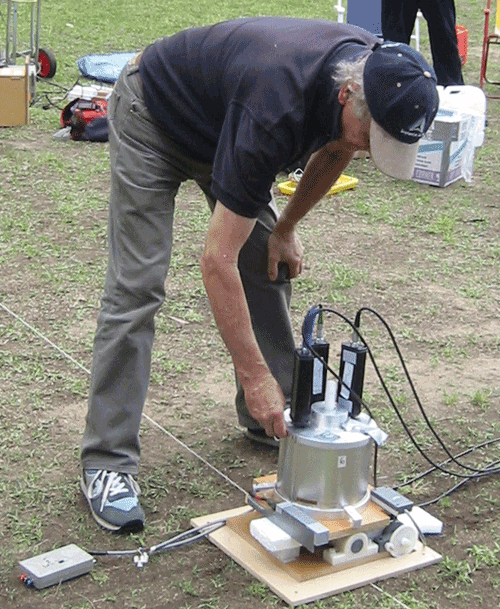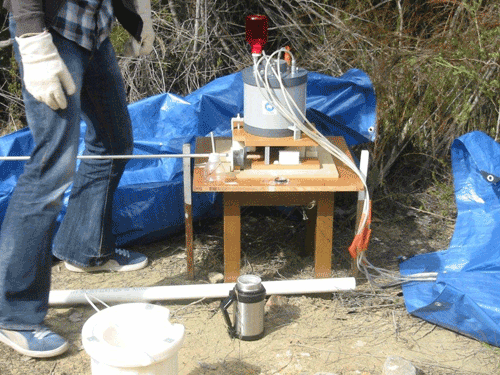How to find undetonated bombs on the sea floor
New sensor developed to locate dangerous explosives
The U.S. Government’s Strategic Environmental Research and Development Program (SERDP), research organization Sky Research, and the Commonwealth Scientific and Industrial Research Organization (CSIRO), have worked together to develop a sensor specifically for the purpose of detecting undetonated bombs on the sea floor.

Magnetic sensor being prepared for field trials.
Same, but different
The unique technology is actually quite similar to the magnetic sensor method used for detecting underground mineral deposits, though it offers some pretty noteworthy advantages according to CSIRO electrical engineer Dr. Keith Leslie.
“Our highly sensitive sensor — the high temperature superconducting tensor gradiometer — delivers significantly more information about the target’s magnetic field than conventional sensors used for this type of detection,” he explains. “It provides data on the location, characterization and magnetic qualities of a target — whether it is a gold deposit or an explosive.”
Meeting a big need
Believe it or not, over 10 million acres of coastal water is considered contaminated with undetonated explosives. While they tend to be on the smaller side of the bomb scale, the biggest concern with them is the fact that the sea water causes them to rust and corrode, making them even more dangerous.
And that’s not even addressing the fact that operating electronics in sea water isn’t necessarily the easiest thing to do.
“The marine environment is difficult to sample due to electrical currents produced by waves, which affect underwater magnetic fields,” Dr Leslie explains, adding “In mineral exploration, near surface deposits are being exhausted, leading our search for minerals deeper underground, where targets are more difficult to detect with traditional surface and airborne measurements.”
Advantages
What makes this sensor particularly useful is the fact that it can provide valuable geological information that discriminates between prospective and non-prospective areas. There’s no need to drill, and the risk of accidentally overlooking valuable mineral deposits is minimized.

Magnetic sensor being prepared for field trials.
“Our sensor has a critical advantage for small targets such as undetonated explosives, where only one or two measurements may be near the target,” Dr. Leslie said.
“In mineral exploration, a string of measurements of the gradients of the magnetic field down a drill hole can determine the direction to the target.”
Outlook
The new sensor technology may lead to renewed exploration efforts at abandoned sites where drilling programs were previously based on insufficient or otherwise inaccurate information. It will also likely be applied to dry-ground practice of clearing landmines.
The sensor has passed a series of tests in a stationary lab environment. At present, trials are being conducted to see how it works in motion, in preparation for upcoming underwater trials. ■
Story via: csiro.au
Advertisement
Learn more about Electronic Products Magazine






